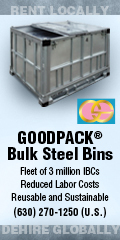
| Archives/Subscribe | www.clfp.com | Contact Us | May 6, 2014 |
Watch for New Impacts from the Latest Environmental Justice Screening Tool
California Environmental Protection Agency ("Cal/EPA") and the Office of Environmental Health Hazard Assessment ("OEHHA") have announced the availability of the draft California Communities Environmental Health Screening Tool Report ("Draft CalEnviroScreen 2.0") for public review and comment. The written comment period closes on Friday, May 23, 2014. Cal/EPA and OEHHA scheduled a webinar for April 30 and a series of three public workshops in early May to seek public input on the revised draft CalEnviroScreen.
CalEnviroScreen is a screening tool that uses existing environmental, health, and socioeconomic data to create cumulative impacts scores for communities across California. State law requires that Cal/EPA conduct its programs, policies, and activities, and promote enforcement of all health and environmental statutes, to ensure fair treatment of people of all races, cultures and income levels. In response to Cal/EPA’s directive to develop guidance on assessing, preventing, and reducing disparities in cumulative impacts, OEHHA developed a preliminary screening methodology, developing the draft California Communities Environmental Health Screening Tool. The Draft CalEnviroScreen 2.0 is the latest version.
The new draft uses the previous version’s methodology, but proposes several significant changes affecting assessment of the cumulative impacts of environmental conditions. Two changes are new indicators for drinking water quality and unemployment. The drinking water indicator is a toxicity-weighted drinking water quality index taking into account the number, concentration, and relative toxicity of contaminants based on data from sources including the California Department of Public Health and the State Water Resources Control Board. OEHHA explains that drinking water is "an important potential pathway for exposure" to contaminants.
The unemployment indicator was added to the socioeconomic factor to reflect the rate of unemployment as it relates to pollution exposure and poor health. CalEnviroScreen 2.0 also analyzes pollution burdens and vulnerabilities in census tracts, rather than ZIP codes which OEHHA believes will allow for a more precise analysis of cumulative impacts for many parts of the state. Additional proposed changes include revised weighting and proximity adjustments, changes in modeling, additional sources of data and updated datasets.
Cal/EPA’s ultimate goal is to incorporate cumulative impact considerations into environmental decision-making. Agencies and legislators have already begun to look at ways to use CalEnviroScreen in their programs and legislative initiatives. The tool is intended to bolster environmental justice efforts, allowing agencies and governments to identify opportunities for economic development and for prioritizing assistance through Cal/EPA loan and grant programs.
The highest pollution burdens and population sensitivities indicated by CalEnviroScreen 2.0 occur in census tracts located in the San Joaquin Valley, Los Angeles County and the Inland Empire. However, CalEnviroScreen may have other consequences for businesses operating in highly impacted areas. For example, regulators may decide to use the screening methodology to target enforcement efforts based on the relative ranking of pollution within a particular community, or to identify priority areas for environmental monitoring. Others may even rely on the screening tool to identify areas as posing public health risks, or lower real estate values.
We will continue to monitor the development of Draft CalEnviroScreen 2.0 at upcoming public workshops and throughout the written public comment period. For additional information or to submit comments for your business or industry group, please contact us.
The Draft CalEnviroScreen 2.0 can be accessed at:
http://www.oehha.ca.gov/ej/ces2.html?utm_source=Enviroscreen+04%2F21%2F14&utm_campaign=CalEnviroScreen+2.0+-+Update&utm_medium=email. ___________________________
Ashley Porter is an Associate in the Environmental Law, and Food & Agriculture Practices at Downey Brand, LLP in Sacramento, California. Katharine Wagner is a Partner in the same practice groups. Downey Brand has served agricultural clients throughout California since the 1920’s. © 2013 Downey Brand, LLP. www.downeybrand.com
|
|
| CALIFORNIA LEAGUE OF FOOD PROCESSORS 2485 Natomas Park Dr., Suite 550 Sacramento, CA 95833 Phone: (916) 640-8150 Fax: (916) 640-8156 www.clfp.com |
 |

